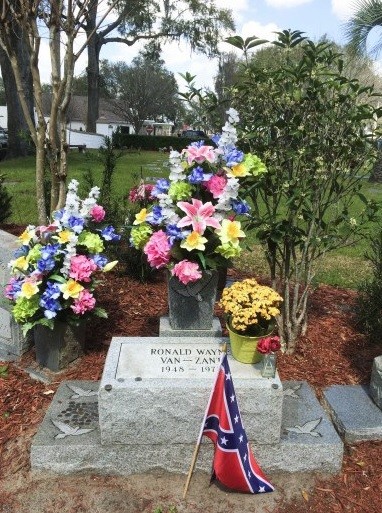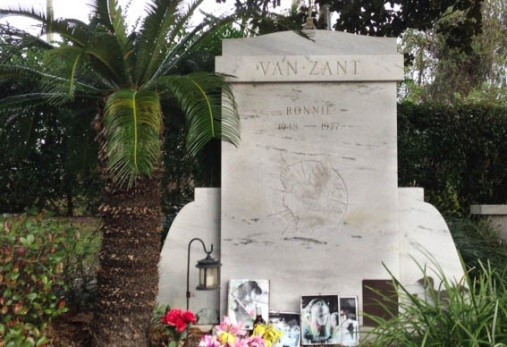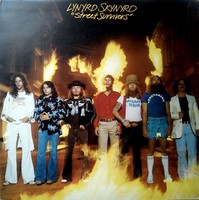Lynyrd Skynyrd lives on
JACKSONVILLE – With the recent closing of Freebird Live in Jacksonville Beach, fans of the 1970s Southern rock group Lynyrd Skynyrd are wondering how the band’s musical journey can be …
This item is available in full to subscribers.
Attention subscribers
To continue reading, you will need to either log in to your subscriber account, below, or purchase a new subscription.
Please log in to continueDon't have an ID?Print subscribersIf you're a print subscriber, but do not yet have an online account, click here to create one. Non-subscribersClick here to see your options for subscribing. Single day passYou also have the option of purchasing 24 hours of access, for $1.00. Click here to purchase a single day pass. |
Lynyrd Skynyrd lives on
JACKSONVILLE – With the recent closing of Freebird Live in Jacksonville Beach, fans of the 1970s Southern rock group Lynyrd Skynyrd are wondering how the band’s musical journey can be remembered.
Although the original band has been gone for 40 years, the band’s story can be told through a tour of the member’s history in Jacksonville, starting with the formation of the band to the horrific plane crash that killed two of the notable members in the group. To this day they still remain popular among true fans.
“THE BEST BAND in the world. They were so good they created a complete new genre. Even Pink Floyd and Zeppelin didn’t do that … LONG LIVE SOUTHERN ROCK,” said Al Haines on a comment that Concert Vault posted, mentioning the band.
Small wonder. Most lists ranking the top Southern rock bands of all time put Skynyrd at or near the top. The band also figures prominently in lists of the best rock bands.
Lynyrd Skynyrd was inducted into the Rock and Roll Hall of Fame on March 13, 2006. So while Lynyrd Skynyrd may no longer be playing, it’s not forgotten. One way to remember the band’s roots and its journey may be to travel back in time in Jacksonville.
The first stop on the Jacksonville tour for fans would be Robert E. Lee High School in Riverside. It was here that the band decided to form in the summer of 1964 when a group of teenage friends and schoolmates came up with the idea of making music together.
The original members of the group were 16-year-old Ronnie Van Zant, 13-year-old Bob Burns, 12-year-old Allen Collins, 12-year-old Gary Rossington and 15-year-old Larry Junstrom. All of the members were from Jacksonville except Junstrom who was from Pittsburgh, Penn. Just to clarify, Steve Gaines was not one of the original members in 1964.
The band’s name, Lynyrd Skynyrd, wasn’t the original moniker. The members tested a few different names before finally sticking with one.
The name Lynyrd Skynyrd was actually a mocking tribute to their physical education teacher, Leonard Skinner, who was strongly against the fact that the boys had long hair. He even went as far as suspending some because of their hair length.
The band also paid tribute to Skinner and his influence that brought the band together. On Lynyrd Skynyrd’s third album “Nuttin’ Fancy” the band used a photo of Skinner’s realty sign for the inside of the album.
The second stop on the tour is Whitey’s Fish Camp on Fleming Island.
Every hardcore fan knows that this was Ronnie’s favorite spot to eat. One of the owners, Billy Ham, was very young during the time, but still remembers that catfish was a favorite among everyone at the time.
“It was the local hangout and back then there wasn’t a lot places,” Ham said. “His brothers Johnny and Donnie visit often with their families to grab a bite.”
The next stop on the tour is Veterans Memorial Arena, formerly Jacksonville Memorial Coliseum, where Skinner introduced the band at a concert in 1974. When contacted, arena officials said while there were no signs to recall the band’s original appearance, but that Skynyrd had returned to the arena to play consistently throughout the years.
After cementing its popularity in Jacksonville, the band began to make its name nationally during the years of the early 1970s. Over the years, Skynyrd would become the prime force in popularizing this Southern-tinged music.
It was in 1973 that the band released its first album, self-titled with the phonetic spelling of its name underneath because their band name caused a lot of confusion in terms of pronunciation.
Again, from the Internet:
“Every Lynyrd Skynyrd song Pandora picks for me has the pronunciation of Lynyrd Skynyrd underneath each song … Pandora must not have a high expectation of their listeners …,” Brooke Bender posted on Facebook.
It was that album, featuring the iconic song “Free Bird,” that helped the members develop their tear-jerking power-ballad sound. The song reached No. 19 on the Billboard Hot 100 chart. Fans would wave lighters around at concerts to the sound of their music.
“Been to a lot of their concerts. And Free Bird is the last song they sing. Even though the concerts are awesome, it makes the whole night even better when they sing that song. Forever a fan,” Tori Hudson said in a comment on a post on Facebook.
The following album “Second Helping” was released in 1974. It contained argumentatively the band’s most famous song, “Sweet Home Alabama.” This song was a response to the Neil Young’s songs “Southern Man” and “Alabama” which implied that people in the South were racist and stuck in the past. The band countered with this song, an anthem about Southern pride and all the good things in Alabama.
Now, head on to 220 Riverside Avenue near downtown. Although the Riverside Studios are no longer located here, this was where the building purchased by the band in 1976 as a practice hall and a studio once stood.
It was in this building that Skynyrd polished its hard-rocking Southern style. The song “Georgia Peaches” off the band’s album “Street Survivors” was recorded here.
The band .38 Special, co-founded by Ronnie’s brother Donnie Van Zant, used the building next door.
Brickyard Road is the next stop on the tour. It is located in Middleburg and is most notable because it was the road on which Ronnie Van Zant lived on at the time of the plane crash. His younger brother also wrote a song about it, based on his memories of that road.
“Street Survivors,” released in 1977, became the band’s fifth album and second platinum disc. It was completed by the band three days before the tragic plane crash in Mississippi that killed
One of the rare surviving copies of the Street Survivors album that was released three days before the plane crash. The flames behind them started a lot of controversy because people believed it foreshadowed the plane crash. Photo by Luke Barber
The crash created controversy over the original cover sleeve of the album, which depicted a photograph of the band that presented Gaines, the guitarist who was showcased in this album and who had died in the fiery crash, engulfed in flames.
The second to last stop on the tour is Jacksonville Memorial Gardens Cemetery in Orange Park, where Ronnie Van Zant and the two Gaines family members who died in the crash were originally buried.
Jay Jacobs, sales counselor of the Gardens, said a few fans still visit the old graves to this day, decorating them with flowers and other accolades.
For decades people have visited the cemetery from all over the country to pay tribute.
Jacobs said he remembers in particular, “mailman, either from New Jersey or New York, (who) would come visit their graves every year.”
However, on June 29, 2000, both Ronnie Van Zant’s and Steve Gaines’ graves were vandalized. Van Zant’s remains were relocated to Riverside Memorial Park Cemetery in Jacksonville.
And that’s the last stop on this historical tour of Lynyrd Skynyrd.
The relocated grave where Ronnie is buried is surrounded by the graves of other Van Zant members. But the grave of the band’s founder stands out.
This is the new burial site of the lead member of Lynyrd Skynyrd that was discovered by accident in 2012. As seen there are fresh flowers and, strange enough, coins all over the tombstone.
Fans still visit the gravesite, so it is often covered with fresh colorful flowers. The two-part tombstone has a base depicting four birds, one on each corner.
On top is a plaque that reads “Ronald Wayne Van Zant 1948-1977.” There’s another bird on a granite flower pot near the grave.
On that day, a confederate flag, stuck right into the ground in front of the grave, waved in the slight breeze.
Here, surrounded by his free birds and a symbol of his love for all things Southern, Ronnie Van Zant lies. It’s the final symbol of the Southern rock music legend that was Lynyrd Skynyrd.












